Viewing and Editing Data Attributes¶
Attributes for vector data are stored in a table. (In a Shapefile vector format, this is contained in a separate file with dbf extension). A table is like a spreadsheet. Each column in the table is called a field. Each row in the table is a record. Each of the records in the attribute table in a GIS corresponds to one feature. The application “links” the attribute records with the feature geometry so that you can find records in the table by selecting features on the map, and find features on the map by selecting features in the table. Each field in the attribute table contains contains a specific type of data such texts, numbers or date.
Viewing vector layer attributes¶
In QGIS you can easily view data attributes by either selecting the feature within the layer of interest or opening the full table.
1. To display the attribute table , select the admin_bnd
layer in Map Legend panel. In the Menu, select
View ‣  Identify Features.
Or just click the
Identify Features.
Or just click the  Identify Features in the
toolbar.
Identify Features in the
toolbar.
2. Click on any polygon in the map to show the feature attributes.

3. To view the attribute table similar to a spreadsheet, select the Administrative boundaries layer in the Map Legend. Right-click the layer and select Open Attribute Table.

4. A new window will appear showing the full table of the data layer. You can browse and edit the attribute table within this window.

A full explanation of the tools within the Attribute table window is presented below:
Explore the different tools to understand how each one works.
Tip
Shapefile store attribute data in a separate file with a dbf extension. This is a widely used GIS database format. You can edit the dbf file outside QGIS using a spreadsheet application such as MS Office Excel and OpenOffice Calc, however, caution should be taken in order not to corrupt the files. Make sure you create a backup before editing the data outside QGIS.
Creating and editing attributes¶
We will update the admin_bnd layer by adding population for each polygon for the census year 2010.
1. Open the attribute table by selecting the Administrative boundaries layer in the Map Legend. Right-click the layer and select Open Attribute Table.

2. To enable editing the attribute table, click
the  Toggle editing mode within the
Attribute table window.
Toggle editing mode within the
Attribute table window.
3. Create a new attribute column by clicking the  New Column. A new dialog will appear.
New Column. A new dialog will appear.
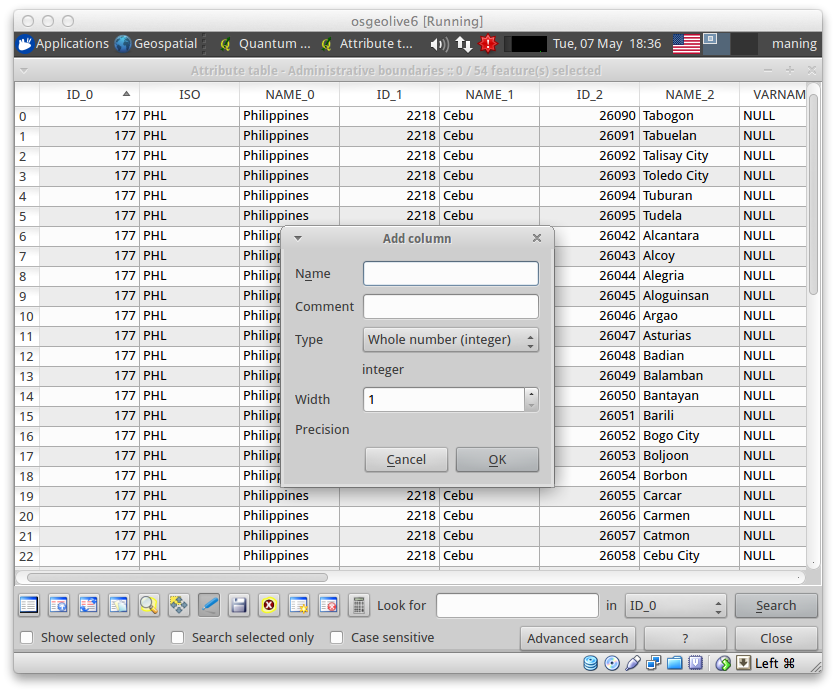
4. In the Name, type pop_2010. In the Type, select Whole number (integer). In the Width, type 10.
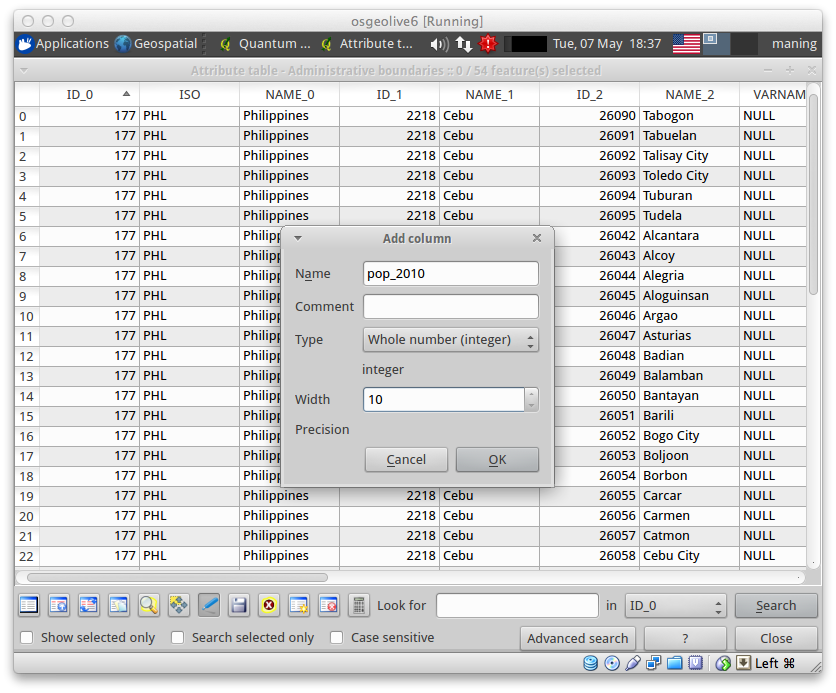
Click OK to add a new column in the attribute table.
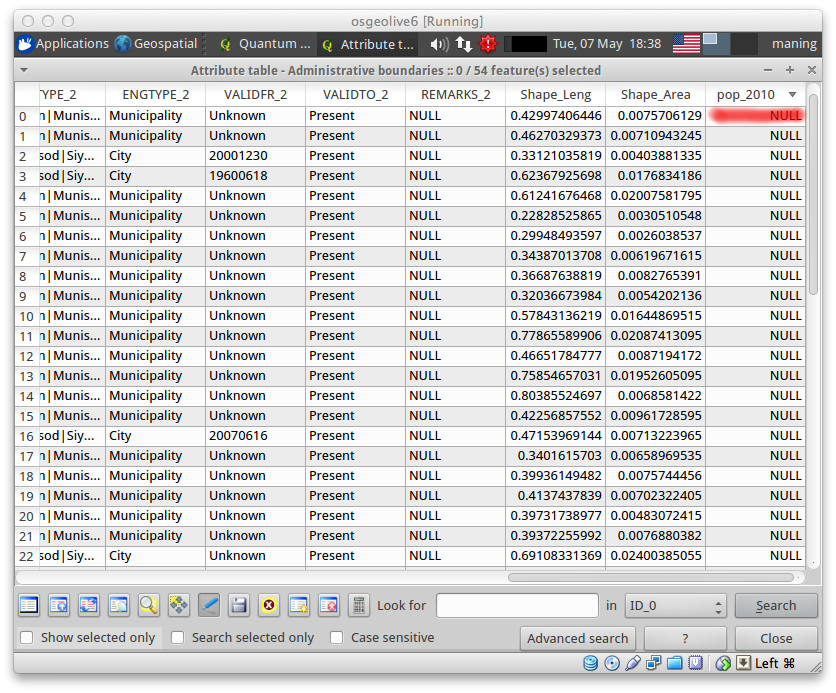
2. We will add the population data in the pop_2010 column. Start adding the population of each municipality following the table below:
Municipality Population (2010)
Alcantara 13556
Alcoy 14757
Alegria 22072
Aloguinsan 27650
Argao 69503
Asturias 44732
Badian 37669
Balamban 71237
Bantayan 74785
Barili 65524
Bogo City 69911
Boljoon 15027
Borbon 31589
Carcar 107323
Carmen 44648
Catmon 28320
Cebu City 866171
Compostela 42574
Consolacion 106649
Cordoba 50353
Daanbantayan 74897
Dalaguete 63239
Danao City 119252
Dumanjug 46754
Ginatilan 15327
Lapu-Lapu City 350467
Liloan 100500
Madridejos 34905
Malabuyoc 18426
Mandaue City 331320
Medellin 50047
Minglanilla 113178
Moalboal 27676
Naga City 101571
Oslob 26116
Pilar 11564
Pinamungahan 57997
Poro 23498
Ronda 18582
Samboan 18613
San Fernando 60970
San Francisco 47357
San Remigio 51394
Santa Fe 27270
Santander 16105
Sibonga 43641
Sogod 30626
Tabogon 33024
Tabuelan 22292
Talisay City 200772
Toledo City 157078
Tuburan 58914
Tudela 9859
Source: National Statistics Office
2010 Census of Population and Housing
http://www.census.gov.ph/sites/default/files/attachments/hsd/pressrelease/Central%20Visayas.pdf
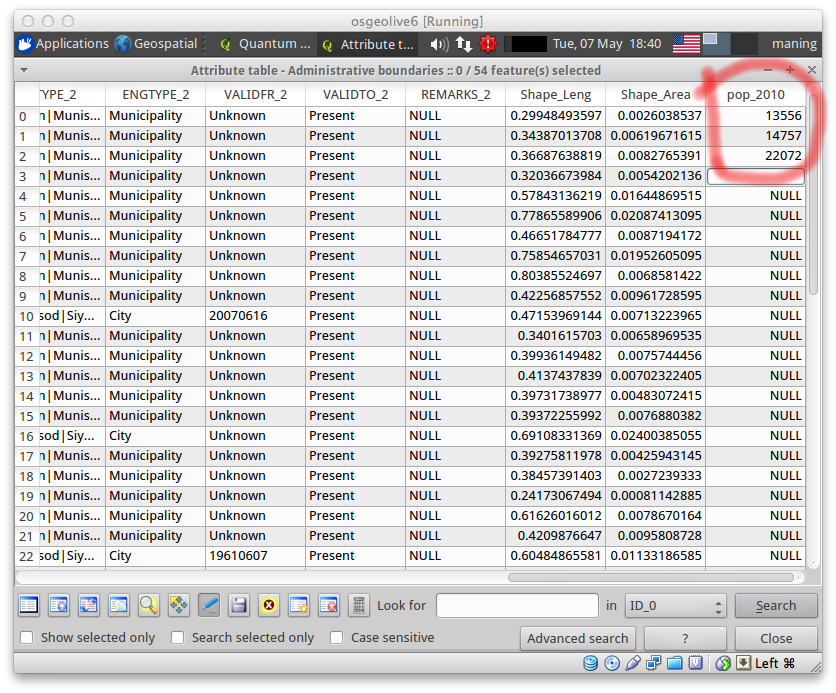
Subset displayed data using table queries¶
QGIS can also limit the display of features to a subset of your data using attribute queries. It follows the standard Structured Query Language (SQL) used by other applications for managing databases. We will subset our data to display only the barangays within a specific district.
1. Select Administrative boundaries. Right-click and select Query...
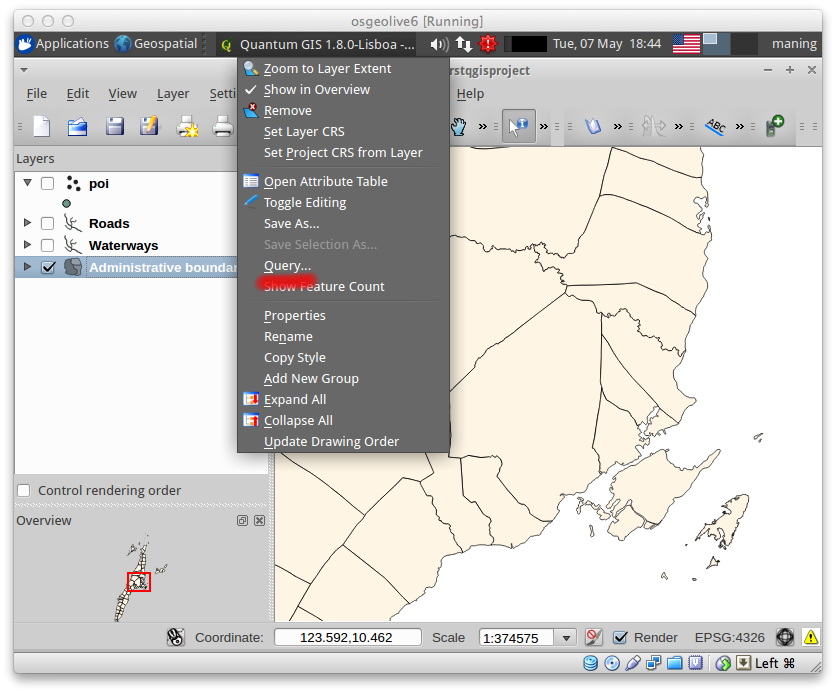
A new window Query Builder will appear.

2. In the Query Builder, double-click NAME_2 in the Field section, then, click the = in the Operators section, then click the Sample in the Values section and finally, double-click Cebu City.

The result will be displayed in the SQL where clause text box as,
"NAME_2" = 'Cebu City'
This SQL simply means that within the NAME_2 attribute column, we will select and display only the polygon of Cebu City.
3. Click Test. If there are no errors in your SQL, click OK. The Administrative boundaries should show the subset of features in your Map View.
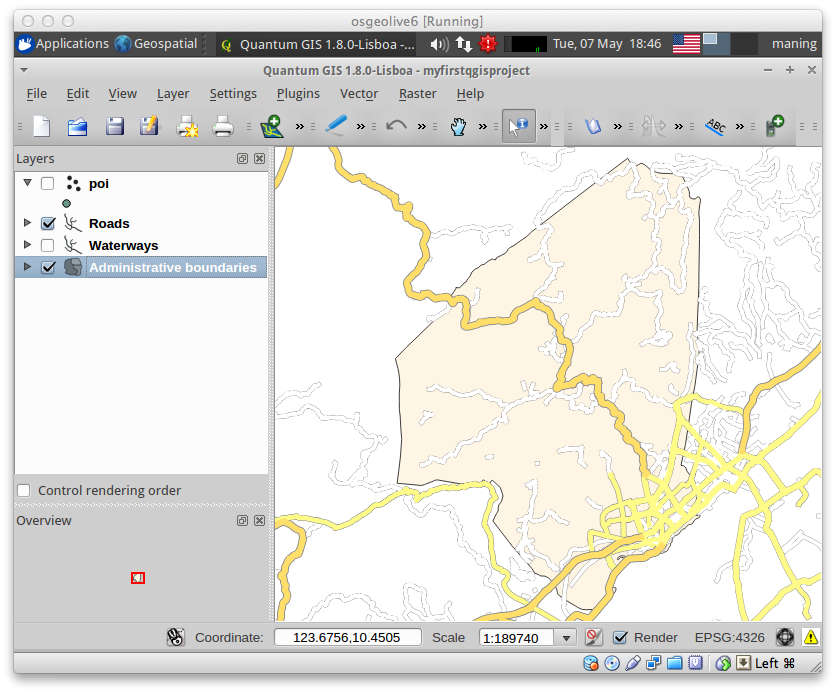
4. Remove the query and style your layer showing different colors base on the population.








